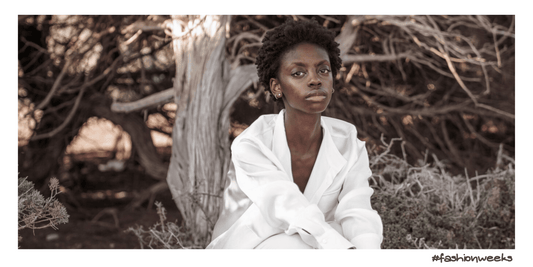We’ll make a strong statement right away: denim isn’t going out of fashion anytime soon.
Denim has been a big part of global culture in the past 150 or more years. The fabric as we know it today was originally manufactured in Nîmes (France) in the 1800s and was known as “bleu de Nîmes” (blue of Nîmes). The wavers there developed a unique technique to make this sturdy fabric, which we still use today. They used indigo (natural dye originally from India) to dye some threads but left others in their natural white colour. This resulted in the typical colour we associate with denim today.
But the way we produce denim today makes it one of the worst materials for the environment and people. So a fair and critical question is: can denim be sustainable?
Today, we address this question.

Let us first understand why denim is such a problem.
But the impact of the denim doesn’t end in the factory. The dyes (and other chemicals) used in the process are never perfect, and much of it gets washed down and leaves the factories in the form of wastewater. That water easily enters the local water systems, introducing the toxic chemicals from the dyes. The biggest issue here is that these dyes don’t biodegrade, but accumulate in nature, posing a long-term threat to the ecosystems. They also pollute the freshwater sources for the communities living near the factories. Some of the biggest denim-producing countries, like India, Pakistan, or Bangladesh, are already experiencing water scarcity. The increasing market needs for denim could only intensify this in the future. And in some places, the waters are so polluted, that people can’t even live there anymore. The 2016 documentary, RiverBlue shows this very well. If you haven’t already, we recommend watching it, as it majorly discusses denim production and its very visible impact on the people and the planet today.
That’s just an overview but you can easily see why denim is a fabric with a high eco-footprint and is a direct danger for many workers and communities. One possible answer to all of this would be to stop making denim altogether.
.png?locale=fr)
The good news is that many factories and brands started looking for alternative ways to denim-making in recent years. Solutions are out there, yet they are often hard to understand, use or even find. It took over a year for Mëune to find a way. Still, here we are!
To be sustainable and ethical, we are tackling all the aspects: the raw material that goes into our fabric, dyes and dyeing agents we use, the conditions of the factory that produces, as well as our production speed and quantity. We choose to work with the Candiani factory in Italy, which is helping us to achieve all of this.
· Dyeing:
Candiani factory developed a dyeing technique they call Indigo Juice, to achieve the faded denim colour we all like. They use OEKO TEX certified indigo, in a mix of non-toxic agents. Along with the Indigo Juice, the factory also uses kitotex as a mordant (agent that makes the dye stick to the fabric).
This dyeing process alone saves an estimated 33% chemicals, 25% energy, and 15% water.
If you want to read in detail about this dyeing technique, check Candiani factory’s sustainability report.
· Production conditions:
The factory is situated just outside Milano, in Parco Del Ticino that has a status of a natural reserve. Because of this, it is operating under strict environmental regulations. The factory is known as “the greenest mill in the blue world". We also made sure that everyone working there is fairly paid.
· Production speed and quantities:
.png?locale=fr)
As said, it took us a long time to do this, in an industry that is not structured for a sustainable nor ethical business. However, we aren’t stopping there. We are actively looking to improve our process and further reduce our impact. In the future, we are looking to possibly replace organic cotton with more sustainable materials, like hemp and linen, or even recycled materials.
In the meantime, we would love to hear from you! Tell us: how do you like to wear your denim?
Written by Tena
About Tena:




